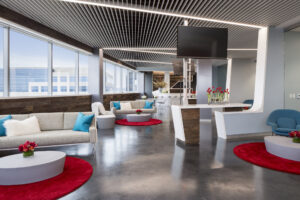As work evolves, it’s crucial to understand the new paradigms shaping our workplaces. Welcome back to our Unworking Weekly mini-series, inspired by new book “Unworking: The Reinvention of the Modern Office” by Philip Ross & Jeremy Myerson.
Over the past twelve weeks, we have explored the themes of each chapter, offering insights into the book’s vision for the future of work and the workplace. The last decade has seen significant shifts in demographic trends, greatly impacting the workforce and the spaces in which we work. As we enter the twelfth week of our series, we delve into Chapter 13: Demography, which examines how understanding the demographic landscape can help organisations adapt and thrive.
Demography, in the context of work and the workplace, refers to the statistical study of populations, particularly regarding age, gender, race, and other characteristics that shape the workforce.
This encompasses the increasing presence of multiple generations in the workplace, shifting societal norms, and the need for inclusivity in workplace design. Recognising and addressing these demographic dynamics is essential for fostering a work environment that promotes collaboration, creativity, and employee satisfaction.

The Dynamics of a Multi-Generational Workforce
The modern workplace now includes four distinct generations: Baby Boomers, Generation X, Millennials, and Generation Z. Each generation brings unique values, work ethics, and expectations that influence workplace culture and productivity.
Research shows that bridging generational gaps can lead to enhanced collaboration and innovation. According to a study by the Pew Research Centre, 50% of employees believe that having a diverse workforce improves workplace culture. However, misunderstandings and conflicting work styles can hinder productivity. Therefore, organisations must prioritise inclusive practices that celebrate generational diversity, creating an environment where every employee feels valued and heard.
SAP, a global software company, has embraced a multi-generational workforce by fostering intergenerational collaboration through mentorship programs. By pairing employees from different generations, SAP encourages knowledge sharing and skill development while creating a culture of respect and understanding. This approach not only enhances employee engagement but also drives innovation through diverse perspectives.
Inclusivity in Workplace Design
Incorporating inclusivity into workplace design is essential for meeting the diverse needs of an aging workforce and a younger, tech-savvy generation. Research indicates that workplaces designed with inclusivity in mind can lead to improved employee morale, retention, and productivity.
Flexible workspaces that accommodate different work styles and preferences are becoming increasingly important. Organisations are moving away from rigid office layouts towards designs that prioritise adaptability and accessibility. This shift ensures that all employees, regardless of age or ability, can thrive in their work environment.
Johnson & Johnson’s global headquarters in New Brunswick exemplifies inclusivity in workplace design. The campus features adjustable workstations, multi-purpose collaboration spaces, and wellness areas, promoting employee well-being and productivity. By prioritising diverse work styles and accessibility, Johnson & Johnson demonstrates how thoughtful design can enhance the employee experience and foster a sense of belonging.

The Demand for Sustainability
Younger generations, particularly Millennials and Generation Z, are driving the demand for sustainable and responsible workplace practices. They expect their employers to take action on environmental issues and prioritise corporate social responsibility. Organisations that align their values with those of their workforce are more likely to attract and retain talent.
A report by Deloitte found that 77% of Millennials consider a company’s environmental and social commitments when choosing an employer. Therefore, companies must adopt sustainable practices and demonstrate their commitment to social responsibility to engage the next generation of workers.
IKEA’s commitment to sustainability is evident in its corporate culture and office design. The company integrates environmentally friendly practices throughout its operations, from using sustainable materials in its offices to promoting renewable energy initiatives. This focus on sustainability resonates with younger employees, fostering a sense of purpose and commitment to the organisation’s mission.
The discussion on demography highlights the importance of understanding the evolving workforce and its implications for the workplace. As organisations navigate the complexities of a multi-generational workforce, inclusive design, and sustainability, it becomes clear that adapting to these demographic shifts is crucial for long-term success.
Readers can dive deeper into the exploration of demographic influences on the workplace in Philip Ross and Jeremy Myerson’s latest book, Unworking: The Reinvention of the Modern Office. By understanding these dynamics, we can embrace the changing landscape of work, creating environments that promote collaboration, inclusivity, and innovation.
Grab your copy of Unworking from Amazon here.
